Living In The Himalayas
14 August 2016For about a month now I’ve been in the capital, Leh, of the Ladakh region of North India.
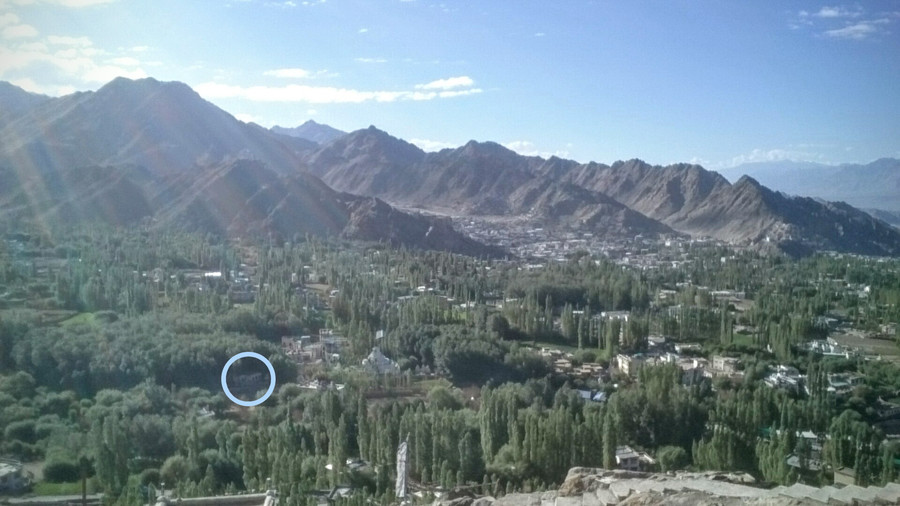
And last week I found a little house to rent on the outskirts of the town, you can just see it in the blue circle.
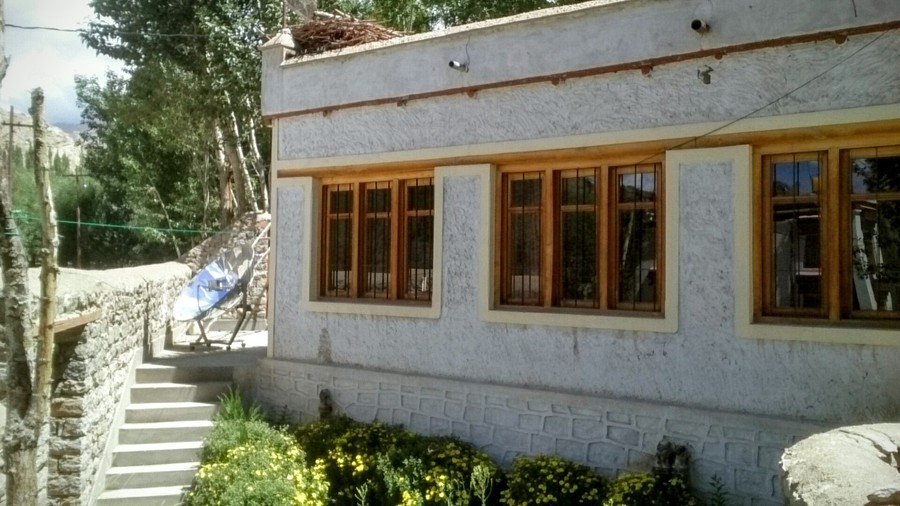
I’m hoping to stay here until my visa expires just after Christmas. But the winters can be harsh, reaching -15C by December. Also, they turn the water pipes off in the town come the end of October, so you’re left to fetch water yourself from various butts. Perhaps if it gets too hard here, I will think about going to the very south of India to an area called Hampi that has some of the best bouldering fields in the world, some say comparable to Fontainebleau.
The Internet is nowhere near good enough for me to find work, which is a good thing. Life is extremely cheap here. Rent is around £150 per month, with all bills included. Naans are 6p each, 10kg of rice is about £3.30 and I get a weekly organic veg box from my landlady for £2.20.
My plan is to alternate months between silent retreat and activity like writing and exploring the mountains. I already have a first draft for a book called ‘Mind The Bollocks’, watch this space for news on that.
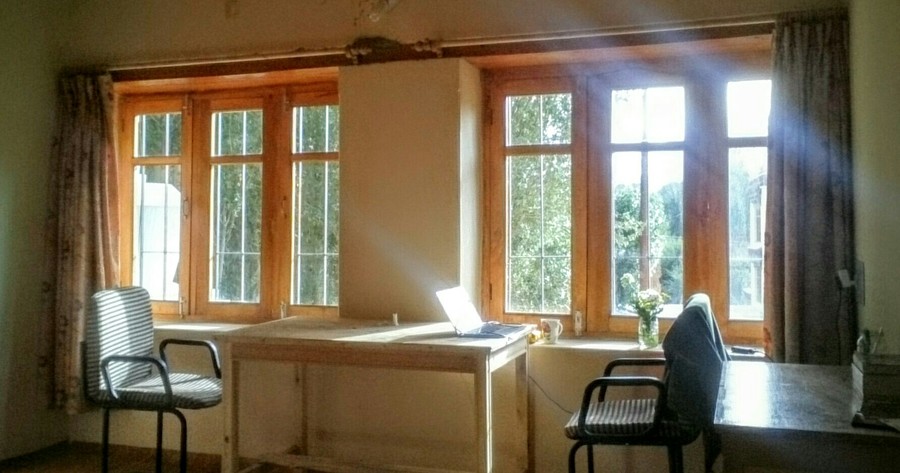
Leh is watched over by the Stok range of mountains, with at least 6 summits over 6000m.
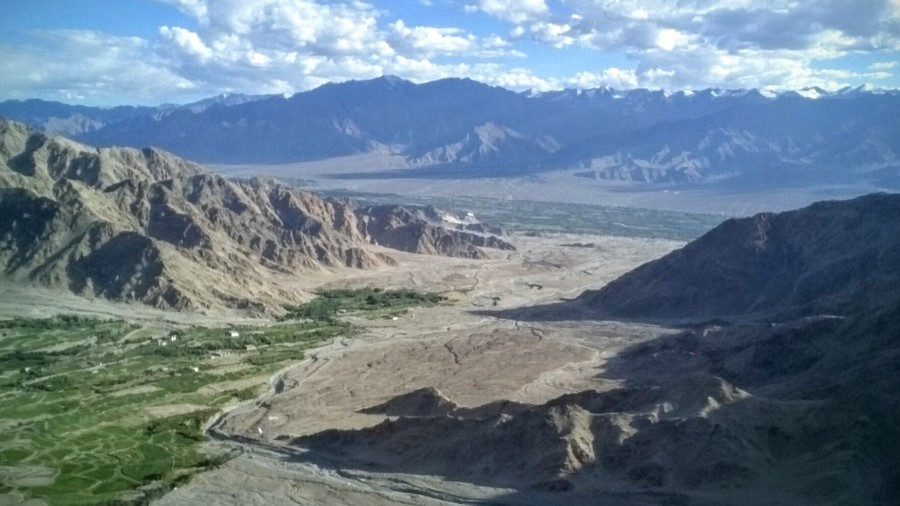
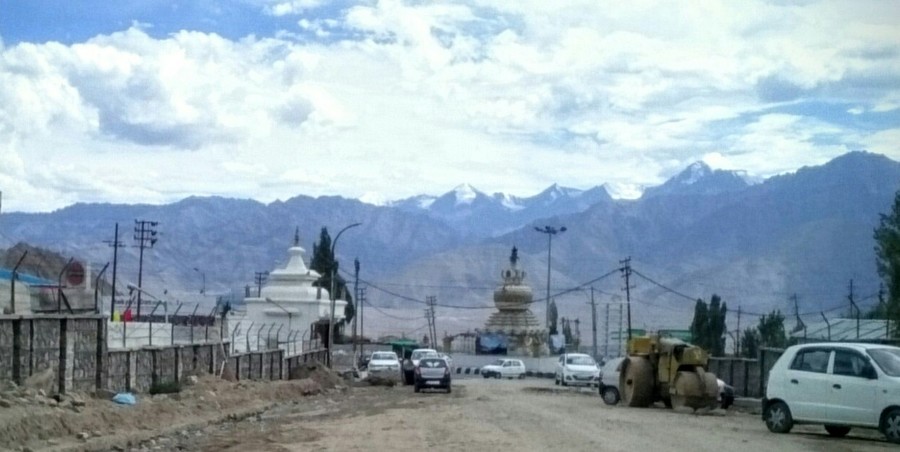
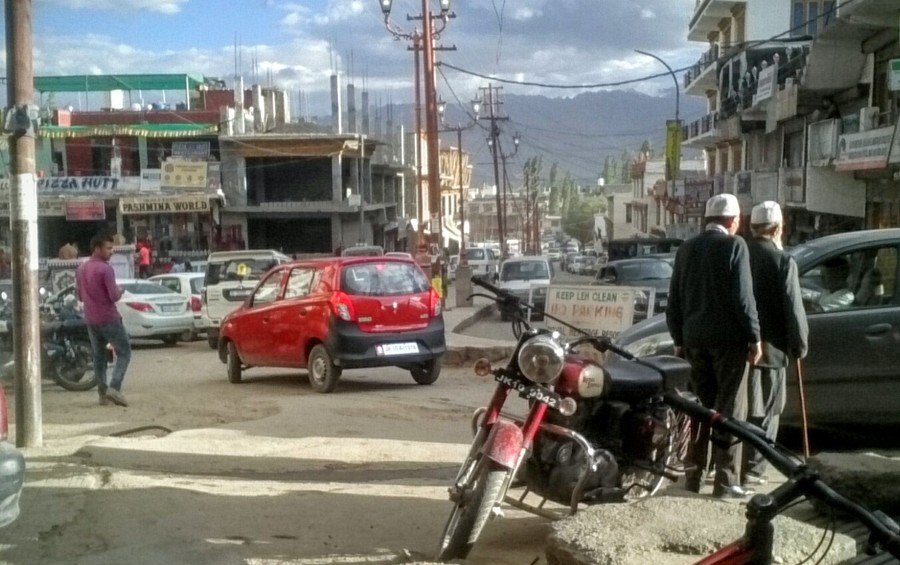
And you can just make out some of the peaks from my front windows too.
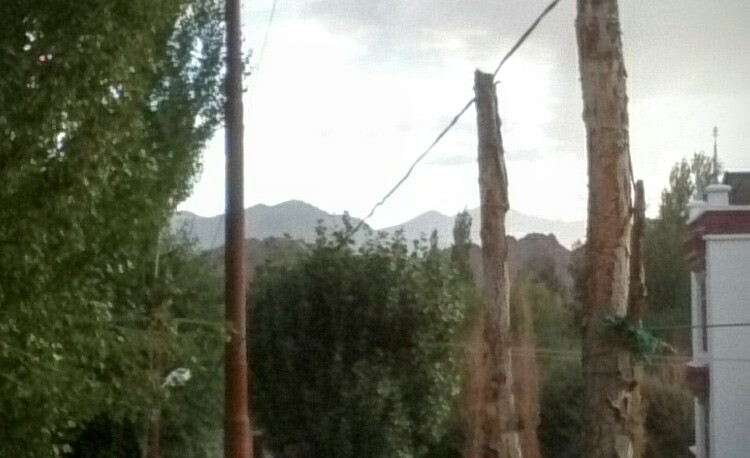
Life here has its difficulties though. There are frequent power cuts and Internet outages. Mains water only flows a few hours a day and although locals drink it, doctors recommend you don’t. Water is stored in a large butt on the roof here, so I can still use taps anytime, but that doesn’t help with the water cleanliness. Also, as is typical, my place has no hot water, but luckily I have a satellite dish heater! It’s surprisingly effective.
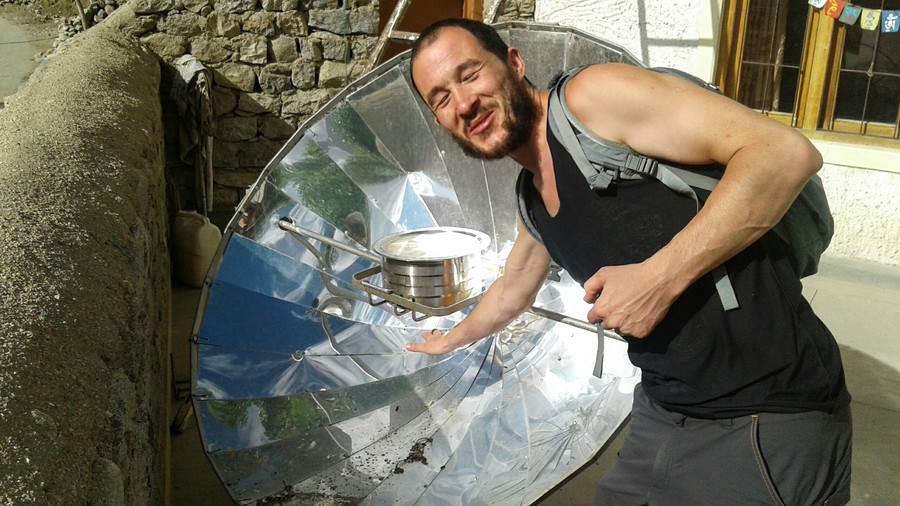
Of course I’ve got a gas cooker as well in my little kitchen.
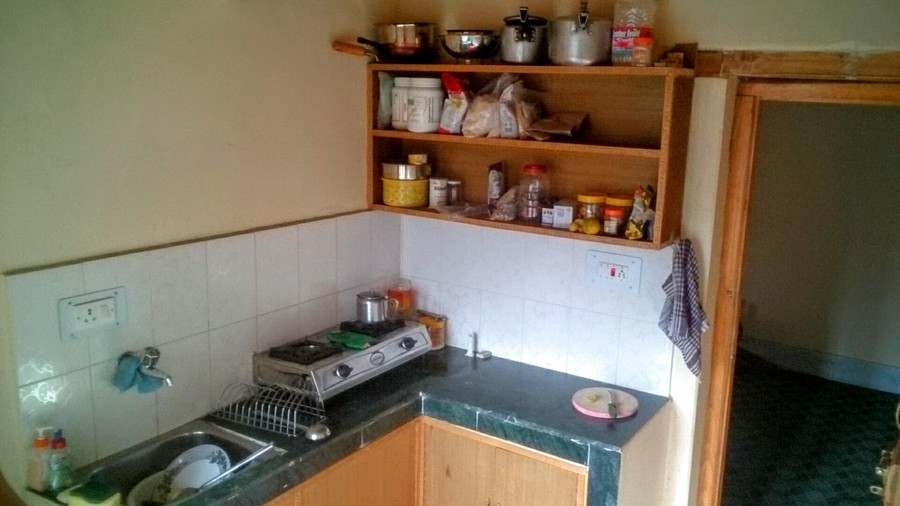
Another struggle here is the lack of oxygen. Leh is already at 3480m, higher than only a few of the highest peaks in Europe. Even after a month I still lose my breath from the slightest strenuous activity, like a small incline in the street, or walking up a flight of stairs. Running, something I’ve done regularly for the last 5 or so years, is dramatically different, it’s like I’ve started all over again. My legs are willing but my lungs beg for an amount of air I just can’t seem to provide. There are posters in town for a 3 day ultra marathon in the region, that takes in three high altitude passes over 5000m. It boggles my mind that people might complete it.
On top of all this, I’ve broken my laptop screen :( Though it’s been some rather interesting geekery hacking solutions to this, namely using my phone to connect to my laptop over SSH and VNC, with some actually quite usable results. I’m going to write up all my hacks for that in another blog post.
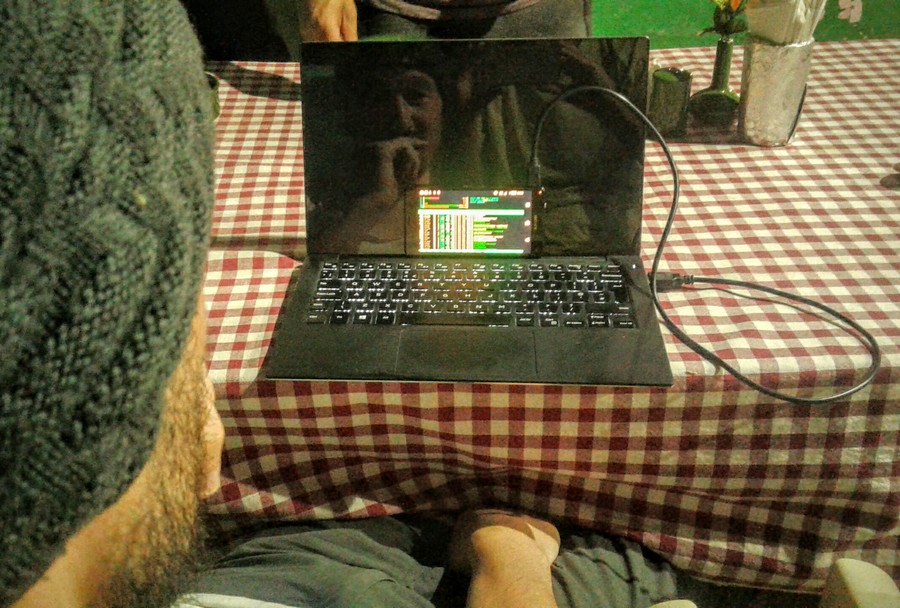
Not so much a difficulty, but more a puncture in the exotic romance, is that Leh is very touristy at this time of year. Like me, people come to get away from the heat and monsoons in the rest of India. Trekking and motorbike touring are massive industries here. Many streets are filled more with foreigners than locals. The largest proportion being young Israelis, come to relax after their years of conscription in the army. Just some 150km away is one of the highest motorable passes in the world at 5340m — signposts claim it to be the highest, but that honour is actually held by a road on a volcano in Ecuador. So it happens sometimes that you’re sitting at a quiet café on say Changspa Road and a convoy of 20 Royal Enfield bikes come blasting their bass cylinders, which is admittedly sexy in its brute power, but frustrating in its ability to render all speech and contemplation temporarily impossible.

If it happened that there was only one thing that I could choose to share with the world about life here, it would be the BRO (Border Road Organisation) road signs. In particular, this not uncommon example:
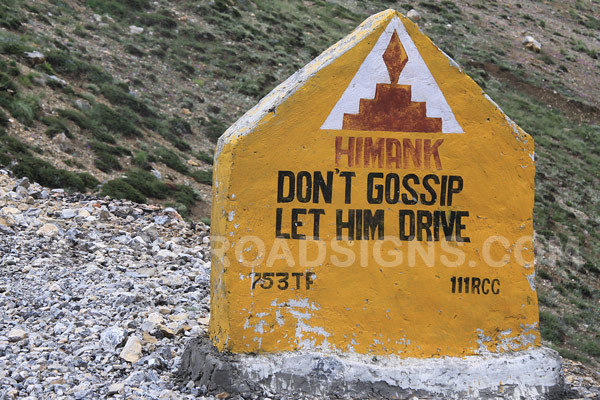
This image is courtesy of the aptly named ladakhroadsigns.com, where you will find many other examples of varying degrees of benusement, bad spelling, profundity and humour.
I find it almost Haiku-like in how it densely packs so many cultural insights into such few characters. Firstly the utter insanity of Indian road safety. Road deaths are one of the highest causes of mortality in the world. Simple logic dictates that if there is anywhere that you can expend a small amount of effort to reduce a large amount of injury and death, then it’s the roads. Yet Indians drive like a game of Grand Theft Auto, chasing almost bumper to bumper, overtaking at every opportunity, preferring to abort an unsafe attempt than wait for a safe one, and all whilst talking on their mobiles. Secondly we have acknowledgement, official political entity acknowledgement at that, of the still pervasive and largely unashamed oppression of females in Indian society. Sadly it seems this is merely the tip of the iceberg of a civil rights landscape that would seem archaic to most Europeans. And finally all of this wrapped up in a colourful and quirky token attempt to address a gravely serious issue.
Other classics include, “Safety on the road, is safe tea at home”, “Go easy on my curves” and “Be Mr Late Than Late Mr”.
However, in fairness, Ladakh is not actually culturally that Indian, it’s more well, Ladakhi, which is closer to neighbouring Tibet in character. Which in turn has connections with Mongolian culture — I especially notice the similarities in cuisine, clothing and religion. Here’s a photo I found on Google:
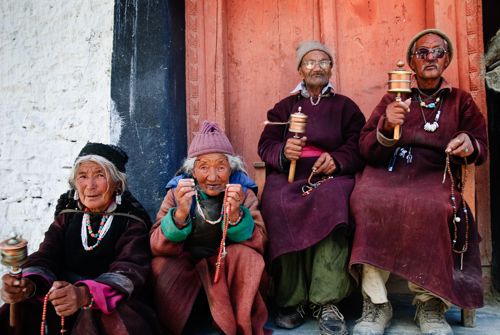
The Ladakhi and Tibetan languages aren’t quite mutually intelligable, but along with a shared script, it doesn’t take natives long to learn the other. The predominant religion here is Tibetan Buddhism, in fact not far up the valley is the Takthok monastery where it is said Padmasambhava, the founder of Tibetan Buddhism, meditated in a cave.
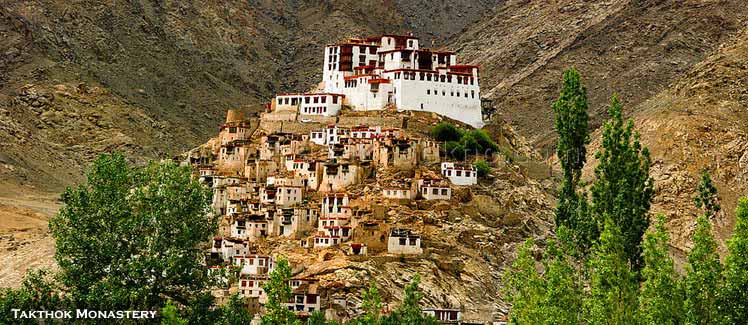
Having such a long stretch of time to do my own thing in such a magical place is something I’ve dreamed about since I reluctantly forced myself out of stoned unemployment 13 years ago. Building a career is just not conducive to indulging in month-long retreats, where I can let go of all responsibilities. I’ll get another job again at some point of course. Unless I become a famous writer first :D
Here’s where I’ll be spending most of my time, on this meditation stool I made:
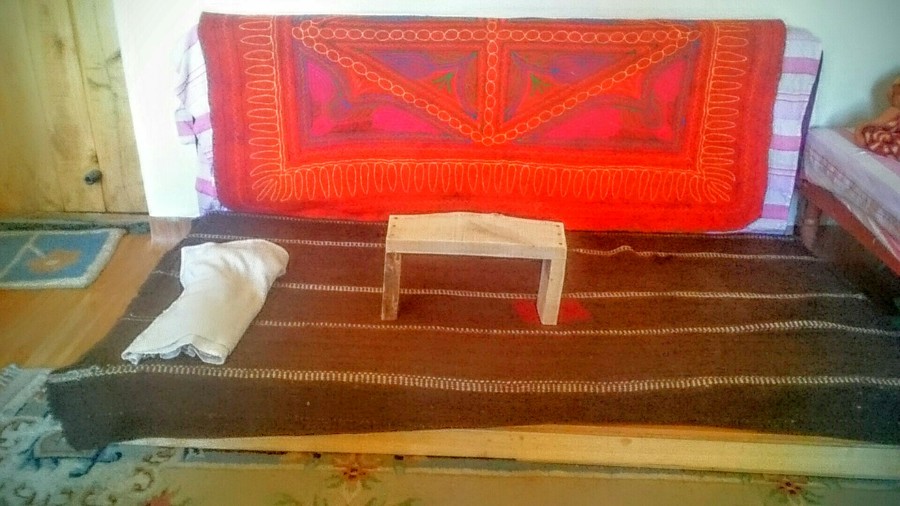
 tom bh
tom bh